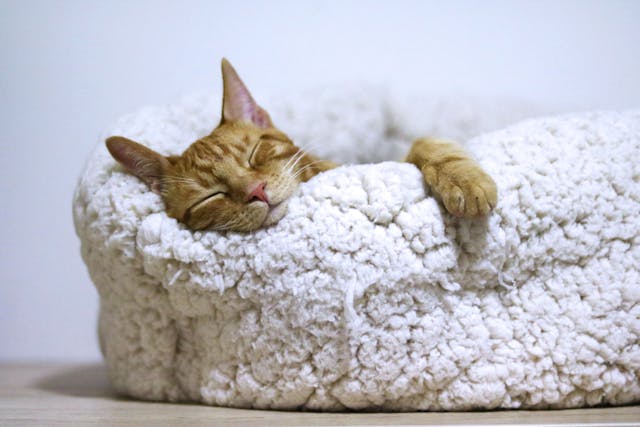
How do circadian rhythms work? Your circadian rhythm is governed by a small group of cells in the center of the brain called the suprachiasmatic nucleus.
Most living organisms has a circadian rhythm. It governs the processes of the organism and sets a cycle over a 24-hour period. The word “circadian” is from the Latin “circa”, which means “around”, and “dies”, which means “day”. We use the word “circa” to mean around even today, as in “circa 1977”. The circadian system controls all of the systems in the body and it tells them when to work and when to stop. It controls your hormones, your digestion, your temperature, your breathing, and your cardiovascular system. It is regulated by light, and it tells your body’s systems when to go to peak activity and when to slow down. Light can have different effects though, depending on the type of animal. Diurnal animals and nocturnal animals have different effects. Light wakes diurnal animals up and sends their bodily systems messages to work. Light tells nocturnal animals to shut down for sleep and it is a lack of light that tells them to wake up and start moving.
We have evolved a 24-hour circadian rhythm because there are 24 hours on our planet. If we had evolved on Jupiter, were that possible, a day there is only 9 hours and 56 minutes, so that is how long our circadian rhythm would work for. I’m not sure what would happen if we had evolved on Mercury where one day lasts 176 of our days. The goal of the circadian rhythm is twofold. The first goal is to make sure we know when to sleep. Sleep is necessary, although no one precisely knows why. Our circadian rhythm prepares us for sleep when it starts to get dark and starts to wake us up when it gets light. The second goal is to make sure we are as active as possible when our food source is around. We eat animals that are awake in the daytime, so we have evolved to be awake in the daytime. Everything with a circadian rhythm is the same. It is the circadian rhythm that tells plants to unfurl and photosynthesize in the sunlight.
So, how does the circadian rhythm work? It is controlled by a tiny group of cells in the center of the brain called the suprachiasmatic nucleus (SCN). The SCN is inside the hypothalamus. When it is daytime, light comes in through the eyes and travels up the optic nerve to the brain. Our eyes have rods and cones, which receive light and analyze it for vision, but we also have ganglion cells, which just register light. The sunlight activates genes in the SCN, which sends out signals to different parts of the brain to start various processes. One signal the SCN sends is to the pineal gland, which produces melatonin. When there is a lot of light, as in early in the morning, the SCN signals the pineal gland to stop producing melatonin, and as the amount of light decreases, the SCN increases the production of melatonin, which builds up in the early evening. Melatonin is the hormone that makes you want to sleep. The SCN also speeds up the heart rate in the morning and raises the body temperature. It speeds up breathing and increases digestion, producing proteins to aid digestion. It also increases the levels of cortisol in your body. Cortisol is a hormone that regulates the body’s stress response and can trigger the release of glucose from your liver, giving you fast energy. This is necessary in the day for animals that hunt, as we used to. As the amount of light decreases, the opposite happens. Melatonin increases and cortisol decreases. Your digestion slows down, and your body temperature drops. During the night, your body temperature, heart rate, and breathing all drop. Cerebrospinal fluid is also washed through the brain to remove waste products and clean it up. Without sleep, these waste products build up.
Our circadian rhythm is not actually 24 hours. It is a little bit over and needs to be reset by sunlight. If you put someone in a dark room, they will sleep and wake for longer periods, slowly going out of sync with the real day. Our circadian rhythm can also cause us problems when we fly around the world because it takes several days to adjust. It is fine if you take a slow boat across time zones, but not if you fly.
There are some organisms that don’t have a circadian rhythm, or a shorter one. Some animals that live at the poles, such as Svalbard reindeer, don’t have circadian rhythms because they are faced with 6 months of light and 6 months of dark. Hibernating animals have different circadian rhythms as well. Sharks and some insects don’t have circadian rhythms either. That’s nice to know. While you are sleeping in your life raft, the sharks are awake. And this is what I learned today.
Try these next:
Sources
https://my.clevelandclinic.org/health/articles/circadian-rhythm
https://my.clevelandclinic.org/health/articles/22187-cortisol
https://en.wikipedia.org/wiki/Circadian_rhythm
https://pmc.ncbi.nlm.nih.gov/articles/PMC3712434
https://science.nasa.gov/mercury/facts
https://science.nasa.gov/jupiter/jupiter-facts
https://www.nhlbi.nih.gov/health/sleep/sleep-wake-cycle
https://www.nih.gov/news-events/nih-research-matters/how-sleep-clears-brain
Photo by Aleksandar Cvetanovic: https://www.pexels.com/photo/orange-cat-sleeping-on-white-bed-1560424/
